
An interactive, grade-specific spelling bee.
- Subject:
- English Language Arts
- Material Type:
- Interactive
- Provider:
- Annenberg Learner
- Author:
- Annenberg Learner
- Date Added:
- 02/26/2019

An interactive, grade-specific spelling bee.

Students learn about the structure of the earth, the movements of its tectonic plates, as well as the forces that create mountains, valleys, volcanoes, and earthquakes.
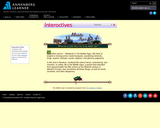
With this interactive resource, students explore what life was really like during the Middle Ages.

Students can read short articles about rock types, the rock cycle, and identifying rocks. Students can collect rocks in a virtual rock collection and learn about each one. A short quiz is provided at the end for students to test their own knowledge.

Students explore the dependence of one variable on another and develop a formula describing the number of toothpicks as a function of the number of squares.

Students will learn to use mathematical models to represent real life situations. In particular, they will use tables and equations to represent the relationship between the number of revolutions made by a "driver" and a "follower" (two connected gears in a system), and they will explain the significance of the radii of the gears in regard to this relationship.
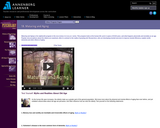
Students will look at the human life cycle in spans of 20-25 years, and what happens physically and mentally as we age. Popular misconceptions about the eldery are examined, often in contrast to the reality of growing old.

Students will recognize patterns and represent situations using algebraic notation and variables.

This resource explores how the events and experiences that take place in the subconscious manifest themselves in our conscious lives. Students learn about repression, the distinction between discovered and false memory syndrome, hypnosis, and split-brain cases.
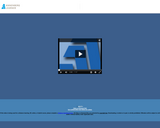
This video introduces the general external topography of the brain. To illustrate the relationship between specific behaviors and brain function, the video begins by showing a racecar driver exercising his skill, and then presents graphic illustrations of the internal activity of his brain. The video reviews several methods of studying brain activity including the CAT scan, PET scan, EEG, and MRI.
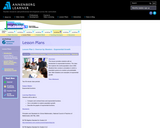
This lesson provides students with an introduction to exponential functions. The class first explores the world population since 1650. Students then conduct a simulation in which a population grows at a random yet predictable rate. Both situations are examples of exponential growth.

Students will learn how to write an equation of a linear function when given a set of data. They will interpret the meaning of the slope and y-intercept and then use the equation to find other values of x and y.
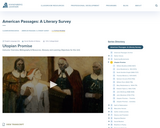
Students discuss the variety of ways in which European settlers imagined Native Americans; understand how myths about America's foundation were formulated, debated, and challenged by these seventeenth- and eighteenth-century writers; explain the basic theological principles of the Quaker and Puritan faiths; and understand how the physical hardships of immigration and the challenges of living and traveling in unfamiliar landscapes shaped the culture of European immigrants in the New World.

Students explain the meaning of the term "individualism" and discuss the way ideals of individualism changed over the course of the eighteenth and nineteenth centuries; discuss the importance of race and gender in negotiations of American political and cultural independence; explain the relationship between eighteenth- century Enlightenment ideals and nineteenth-century Romanticism; and discuss transformations in American spiritual beliefs between the eighteenth and nineteenth centuries, from the Great Awakening to Deism to more Romantic conceptions of divinity.
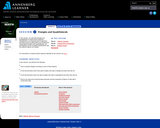
This site contains several distinct lessons that focus on the defining characteristics of triangles and quadrilaterals. Beginning with illustrations of various categories of triangles (acute, obtuse, right, scalene, isosceles, equilateral), students use an applet to explore what combinations of three side lengths can constitute a triangle. They then extend these techniques to the study of quadrilaterals. The unit concludes with a contrast between the rigidity of triangles and the nonrigidity of quadrilaterals, with implications for the construction trades. Problems and solutions, suggestions for homework exploration, video clips, and notes for the teacher are included.
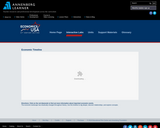
Students can dig deeper, discover relationships, and explore concepts related to the economic history of the United States from 1900 to today.
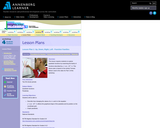
This lesson requires students to explore quadratic functions by examining the family of functions described by y = a (x - h)^2 + k. This lesson plan is based on the activity Tremain Nelson used in the video for Part I of this workshop.

Students create a line plot [with dots] to represent stacks of coins. Then rearrange the dots to form different line plots and watch what happens to the mean.

This lesson teaches students about inverse variation by exploring the relationship between the heights of a fixed amount of water poured into cylindrical containers of different sizes as compared to the area of the containers' bases.

During this video students will build an understanding of and recognize the criteria that make something “matter”. Demonstrations of the differences that exist between solids, liquids, and gases will be shared.